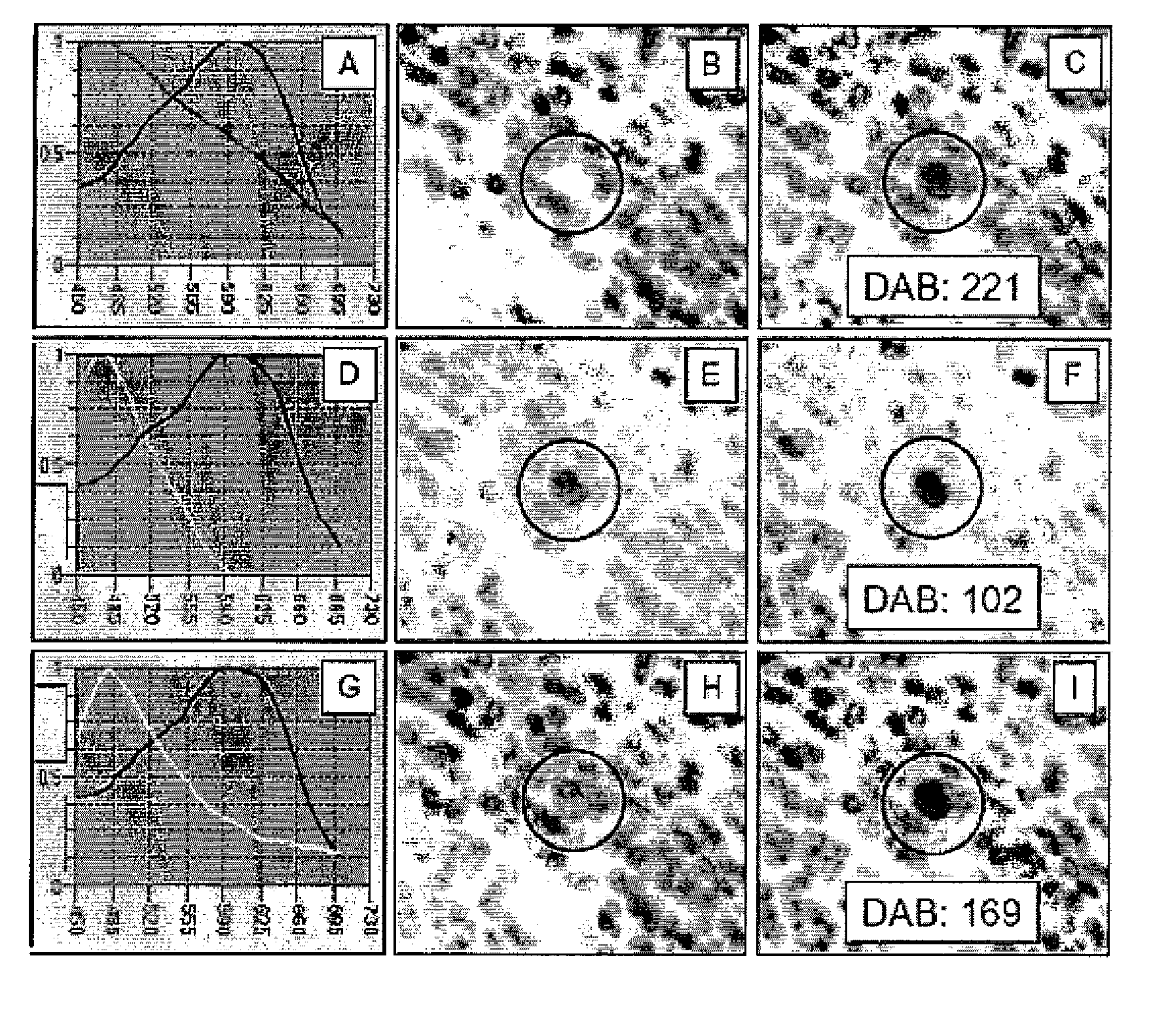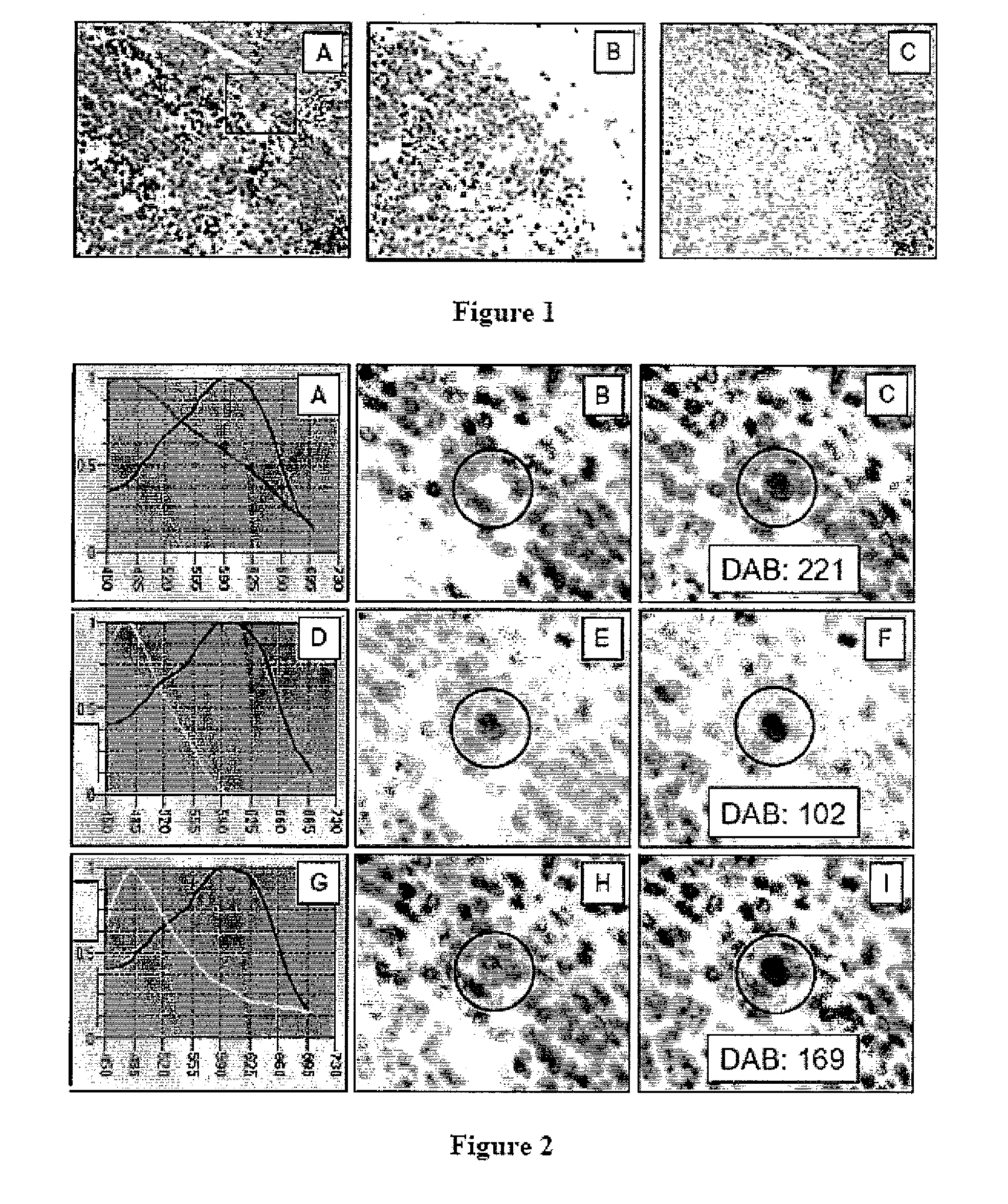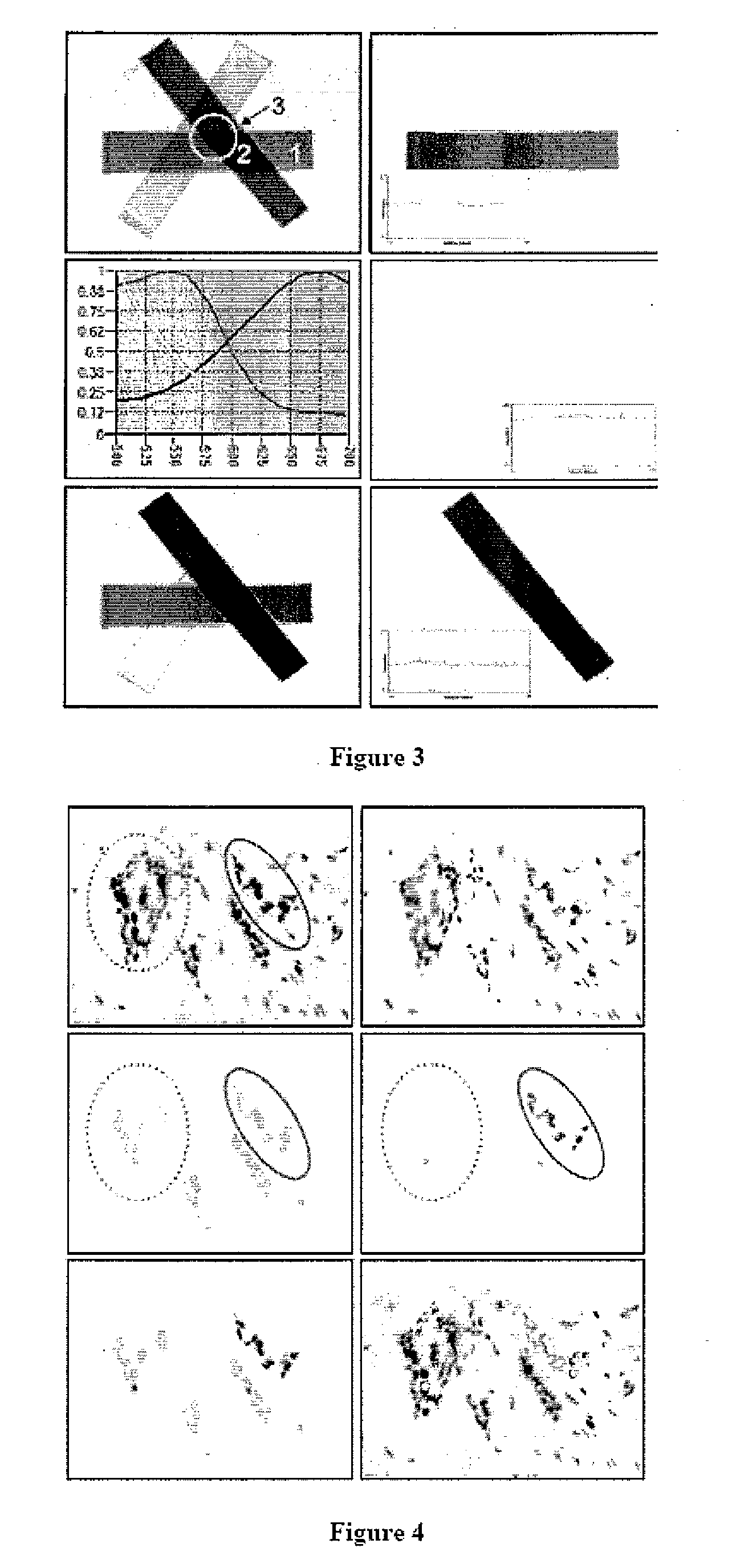Quantifiable Internal Reference Standards for Immunohistochemistry and Uses Thereof
a technology of immunohistochemistry and internal reference standards, applied in biochemistry apparatus and processes, instruments, material analysis, etc., can solve the problems of large variation in fixation/processing procedures, adverse influence of formalin on antigenicity,
- Summary
- Abstract
- Description
- Claims
- Application Information
AI Technical Summary
Problems solved by technology
Method used
Image
Examples
example i
Quantification of Immunohistochemistry
Issues Concerning Methods, Utility and Semi-Quantitative Assessment
Summary
[0052] Immunohistochemistry now is entering its fourth decade of use on formalin fixed paraffin embedded tissues. Over this period the method has evolved to become a major part of the practice of diagnostic surgical pathology worldwide. From the beginning immunohistochemistry has been adapted to provide a range of markers of cell lineage and tissue type, with particular application to the diagnosis and classification of tumors. In this modality immunohistochemical methods were employed simply as ‘special stains’, the results of which were evaluated quantitatively by the pathologist, as for any other stain. More recently, attention has shifted to the demonstration of prognostic markers in tumor cells, driven by the advent of molecular biology and the discovery of numerous regulatory molecules, coupled with manufacture of the corresponding specific antibodies. Immunohist...
example ii
Quantifiable Internal Reference Standards for Immunohistochemistry; the Measurement of Quantity by Weight
[0144] Absent uniform sample preparation for formalin paraffin tissues, and absent available tissue reference standards, it is proposed that selected defined analytes (proteins) present intrinsically within tissues may be employed as quantifiable internal reference standards, against which sample quality can be directly assessed and key analytes directly quantified by immunohistochemistry.
Introduction
[0145] The poor reproducibility of immunohistochemical (IHC) and molecular methods as applied to formalin fixed paraffin embedded (FFPE) tissue sections, is now recognized as a major impediment to basic research, clinical trials and direct patient care.
[0146] In the year 2006, cancer still is diagnosed by the surgical pathologist with his / her microscope using methods that essentially are unchanged over 150 years, from the time that the first histology course was cond...
example iii
IHC / ISH in Archival Tissues
Quantifiable Internal Reference Standards
[0225]“Development of Quantifiable Internal Reference Standards (QIRS) in Normal and Pathologic Tissues for Control of Sample Preparation and Calibration of Immunohistochemical and In Situ Hybridization Assays (Stains) in Formalin Fixed Paraffin Embedded Tissues”.
Specific Aims
[0226] Absent improved and uniform sample preparation for formalin paraffin (FFPE) tissues, and absent available tissue reference standards, we present the hypothesis that analytes (proteins and RNAs) present intrinsically within tissues may be employed as ‘Quantifiable Internal Reference Standards’, against which sample quality can be directly assessed and key analytes can be directly quantified(94).
Novel Features:
[0227] 1. A panel of Quantifiable Internal Reference Standards (QIRS) will be assembled based upon the accurate measurement of proteins (and RNAs) present in consistent amounts in common identifiable cells. A pri...
PUM
| Property | Measurement | Unit |
|---|---|---|
| thickness | aaaaa | aaaaa |
| pH | aaaaa | aaaaa |
| temperature | aaaaa | aaaaa |
Abstract
Description
Claims
Application Information
 Login to View More
Login to View More - R&D
- Intellectual Property
- Life Sciences
- Materials
- Tech Scout
- Unparalleled Data Quality
- Higher Quality Content
- 60% Fewer Hallucinations
Browse by: Latest US Patents, China's latest patents, Technical Efficacy Thesaurus, Application Domain, Technology Topic, Popular Technical Reports.
© 2025 PatSnap. All rights reserved.Legal|Privacy policy|Modern Slavery Act Transparency Statement|Sitemap|About US| Contact US: help@patsnap.com



